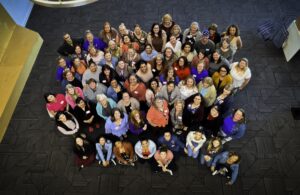Single-room occupancy homes—called SROs—are a simple but powerful idea. Each resident gets a private, lockable room and shares common spaces like the kitchen and bathroom. It’s not a shelter, and it’s not an apartment. But for someone trying to get back on their feet, it can be the right-sized step toward stability.
Community Action Team (CAT) started with just 3 SRO rooms in 2023. In 2025, the program has grown to nine rooms across three houses—more than doubling the number of people who can be served at a time. These homes are filling a gap in our housing system, giving single adults a place to land, regroup, and move forward.

Each house runs on structure and support. There are shared expectations, printed house rules, and daily check-ins to make sure things are safe and clean. “We do weekly house meetings, and people in time-limited programs have to come in weekly and show us what they’re working on—like job searches,” explains Heather Johnson, CAT’s Housing Solutions Program Manager.
Support starts before someone even moves in. Staff help get people on housing waitlists, apply for benefits, and sort through any barriers they’re facing. “We ask, what do you need help with? Do you need to apply for Social Security? Are you disqualified from some housing options? We work through that from the beginning,” says Heather.
“[It takes] someone who understands trauma, behavioral health, and how to build trust with people who’ve been through a lot. You can’t fake that.”
Heather Johnson, CAT’s Housing Solutions Program Manager – Talking about the case managers who work with clients in the SRO program.
Once someone is in the program, they’re connected with a case manager and sometimes with a peer mentor—someone who’s walked a similar path and is there to offer steady, judgment-free support. CAT also partners with Columbia Community Mental Health and other partners in the community to make sure residents are getting connected to healthcare, treatment, and care coordination when needed.
Even though these are permanent housing units, the goal is to help people stabilize and, when they’re ready, move on to more independent housing. “We keep our eye out for the next right step,” says Heather. “If someone is ready for less supervision, we help them make that move and then offer their room to someone who needs more support.”
Right now, CAT supports 96 people through its permanent housing programs. Nine of those are in the SRO homes, and the rest live in apartments and other housing throughout the community. Whether they’re in one of CAT’s houses or somewhere else, everyone gets case management and ongoing support.
One of the biggest challenges is staffing. “It takes a specific kind of person to do this work,” Heather says. “Someone who understands trauma, behavioral health, and how to build trust with people who’ve been through a lot. You can’t fake that.”


You must be logged in to post a comment.